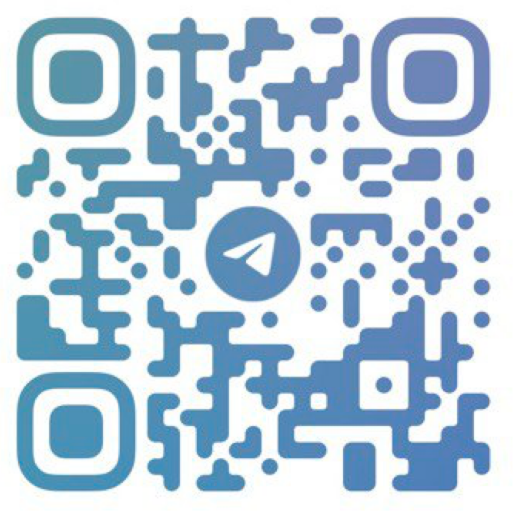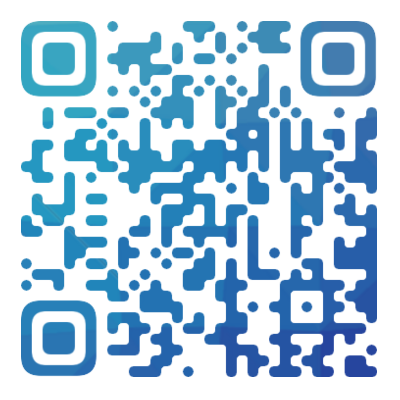The Map that Tracks Everything | Blockchain-based Map
The Map that Tracks Everything | Blockchain-based Map
The blockchain-based map aims to replace GPS. Can it be trusted?
 Dong Wenjie/Getty November 30, 2018
Dong Wenjie/Getty November 30, 2018
Cryptocurrencies have experienced a challenging year. Bitcoin has crashed over 75% since its peak, and its competitors have also struggled. Despite the bursting of the non-Huobi bubble, the underlying technology of these coins, blockchain, still excites many non-financial speculators as it offers a way to record and verify transactions without the need for central institutions like banks or governments.
For instance, in urban areas, proponents have promised a range of "blockchain urbanism" innovations. Some have grand ambitions: crypto entrepreneurs are moving to edge regions and developing countries where light regulation and low taxation allow them to establish new nations and cities in the image of blockchain. Others take a more moderate approach, applying blockchain to address urban inefficiencies in planning, zoning, building performance, and energy transactions.
Blockchain is also supporting a new mapping paradigm. Cryptocartographers hope to use it for spatial verification, confirming that things are where they claim to be. What could this be useful for? Well, you could precisely know when an Amazon drone delivers a package to your doorstep, and the cost would be automatically deducted from your account. No more unscrupulous delivery drivers or disputed charges for lost packages in transit. Or when opening a new bank account, you could physically confirm your permanent address by being present at the designated verification period instead of providing copies of your utility bills. You could also supplement your insurance claim with timestamped and geolocated photos of your flooded basement or smashed windshield. Or as you pass by a local coffee shop, the owner could "airdrop" some Bitcoin coupons to your phone, which you can redeem by stopping by within half an hour before the offer expires.
These examples certainly sound enticing. However, mapping the physical world may not be as straightforward as envisioned by cryptocurrency enthusiasts.
Currency was the first target of blockchain, but theoretically, any type of protocol that currently requires intermediaries can be managed using blockchain technology - no need for lawyers, notaries, gamblers, or referees, as Nick Paumgarten of The New Yorker puts it. Blockchain-based "smart contracts" automatically fulfill when their predetermined conditions are met. Proof of Location (PoL) protocols utilize this approach for spatial verification.
Of course, we already have tools for geographic verification - Google Maps, Foursquare, OpenStreetMap, and the government-supported Global Positioning System (GPS) they rely on. But cryptomappers argue that we can't always trust them. Commercial map data is proprietary, and the features they depict sometimes fail to capture the rapid changes in physical space. Crowdsourcing tools like OpenStreetMap are plagued by various issues: insufficient funding, unclear usage policies, failure to create incentives for contributors, and difficulties in accuracy.
Critics say that GPS is not suitable for use in dense urban environments and indoors, it drains phone batteries, and it is centralized (a big disadvantage for blockchain advocates). According to PoL newcomer Foam, "civilian GPS is unencrypted and lacks provenance or authentication capabilities. Despite horrific warnings raised as early as 2012, it remains incredibly susceptible to fraud, spoofing, jamming, and network attacks."
Read: What happens if GPS fails?
Some of the criticisms are somewhat exaggerated, according to cartographer and historian of science Bill Rankin. But they do partly explain why Foam believes there are "no reliable and trusted location verification services" and "no established standards for embedding coordinates of location, physical address, or smart contracts." In the growing field of PoL, each new platform has its own hardware infrastructure, protocols, economy, and confusing jargon. Foam plans to create incentives for operators to establish low-power wide-area networks composed of radios accessible to unauthorized wireless spectrum. According to CEO Ryan John King, "Regional operators on the Foam network are effectively doing the equivalent work of Bitcoin miners."
When four or more nearby beacons (referred to as "anchors" by Foam) form a "zone," they can synchronize with each other to determine the location of an object. King told me that GPS works on a similar general principle, but it only allows one-way communication; Foam's PoL protocol allows users to send messages to the system, which the "validators" verify and store on the blockchain. Importantly, the Foam network is resistant to interference and requires less power than GPS.
Foam's protocol is open source. However, cartographers have to purchase tokens to have the right to contribute to it. Regional operators can either invest or earn tokens for performing geolocation work. The company hopes that this incentive system, absent in other volunteer crowdsourcing projects, will help expand the geographical coverage of the network.
The protocol also advocates for other rewards. In a paid scenario, broadcasters can offer location services that link the location on the blockchain with addresses on physical maps - geographic information - using smart contracts. This is how services like package tracking, address verification, and contract execution could operate.
Localization is intended for commercialization. As Foam puts it, these platforms aim to "cultivate an application ecosystem built on top of a verified location standard." The entire ecosystem, rather than a centralized institution, can determine what appears on the map. Contributors can use their Foam tokens to create lists of points of interest (POIs), such as coffee shops with Wi-Fi, the best dog parks, urban landmarks, or government facilities. Other token holders can vote on these lists; an upvote increases the value of the list and the token value of its creator. A downvote signals that other token holders believe the nominated POI would lower the quality of the list.
On top of this infrastructure, Foam offers an interface that acts as a "Bloomberg terminal crossed with Google Maps." The dashboard allows users to interact with all these smart contracts and take action, enabling a range of applications - from autonomous vehicle tracking to supply chain management and location-based games like Pokémon Go. Foam's competitor, XYO Network, proposes that PoL can also help government agencies and police forces track regulated firearms to ensure they are always in the hands of authorized agents. I asked King if they plan to prevent specific uses, such as surveillance and predatory marketing, and he told me that "governance is built into the protocol" (unlike GPS). Foam "requires a minimal stake to participate," and King said that using one's tokens as collateral can serve as a "spam mitigation mechanism." The voting process also provides checks and balances.
King explains that Foam is the only PoL project providing a "full-stack location service," including location and encoding standards and visualizers. "It's important to start from scratch," he says, starting a "brand-new infrastructure" that makes location "holistic."
What constitutes a "high-quality" list of places in the world? Foam claims to focus on "objective" spatial information, but it seems to view spatial value from an "economic or reputational perspective." This may lead users to stake their tokens on drawing easily
verifiable, predictable features and high-quality communities and facilities (i.e., those with good reputations in terms of good schools, low crime rates, and high property values). Nonetheless, users can also use their tokens to "signal" where location services are needed and incentivize the development of underserved areas. Betting on an emerging area determines a user's "spatial mining reward" - in this case, a bounty for expanding the map to represent underrepresented areas.
Signals can become a means of speculation in cryptocurrency real estate. This could have substantial impacts - perhaps even gentrification and displacement in real life. However, King proposes that signals can also act as a "catalyst for public good" - for example, for new green spaces or green developments - and allow cartographers to "ascribe community value to places."
Foam sees its encrypted maps as an extension of cartographic heritage, claiming its users are "inheritors of the backgrounded work of cartographers throughout history, maintaining everything from terrain to dense urban streets and all geographic data in between." At the same time, the company sees itself as an economic and political engine, "granting control over POI registration to local market and community forces."
It hopes to spark new urban services, local participation, and improved efficiency. But not all "community forces" are positive; they also include neighborhoodism and entrenched prejudices such as racism and classism. Even socially entrepreneurial types of crypto-kart drivers ostensibly committed to the public good may plan and vote for points based on their privileged (given we're talking about blockchain, likely young male) perspectives and blind biases. Voting for points of interest doesn't guarantee they will serve the public well.
Indeed, Foam, like its predecessor GPS, is built upon biases. As Rankin explains, the creators of GPS saw it as a practical tool that turned location into a "commodity as available as electricity or water." For Rankin, this design carries political significance. He states that it "substitutes a local grid of geocoordinates available for other types of local knowledge," such as folklore, local history, or customary experience. In this way, GPS "encourages interventions without long-term commitment." Similarly, PoL can incentivize location miners to find the "collective value of network growth," framing growth and network effects as civic virtues, as King proposed to me. However, crypto-kart drivers can experience space through the dashboard, engage with space through speculation, rather than with a sense of enduring local, on-the-ground responsibility.
More importantly, some things simply resist being "verified" or "prophesied." Problems can arise when dealing with digital representations of physical assets such as land parcels. Historically, property boundaries marked by degradable and movable things - wooden stakes and streams, fence posts and handshakes - have often been contested, and land area calculations have been inaccurately measured due to cumulative measurement errors over time. Overall, there is much more fluidity in physical boundaries and access issues than what blockchain allows. Who knows how spaces such as informal infrastructure, local topography, and residual spaces accommodating marginalized communities would manifest in encrypted maps? Such spatial negotiations seem ill-suited for "objective" maps and token-based voting. If crypto-cartographers have their way, these communities may be relegated to oblivion.
Please specify source if reproducedThe Map that Tracks Everything | Blockchain-based Map | CoinNav- Blockchain Trading Starts Here

